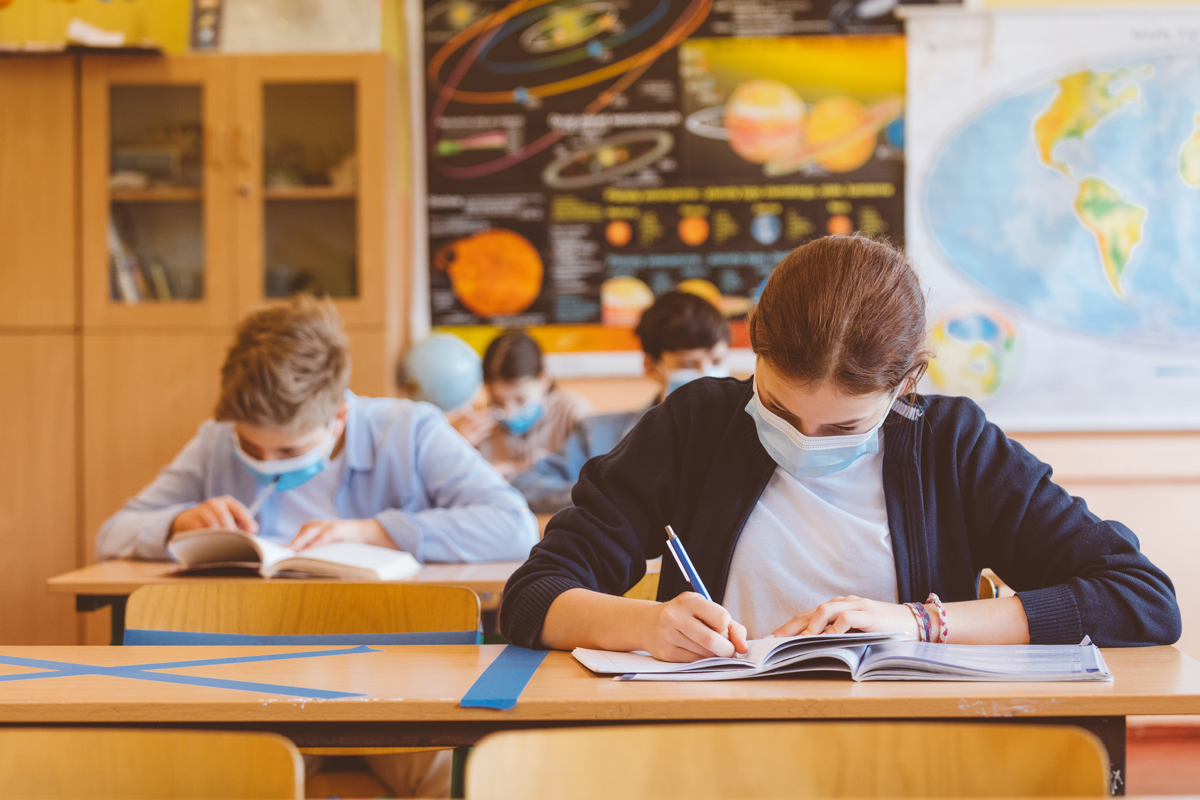Data released March 24 by the U.S. Department of Education shows the majority of children nationwide were receiving some level of in-person instruction at the beginning of 2021, though a substantial number, predominantly youth of color, remained entirely in virtual learning.
The survey — which includes responses from 3,300 schools across 42 states serving either fourth or eighth grade students — shows 76 percent of all students in these grades attended public schools that were open for hybrid or in-person instruction, while 24 percent attended schools that offered only remote or online instruction.
California, however, had far fewer schools report being open fully for in-person instruction. Overall, 14 percent of fourth grade students statewide attend schools offering all students hybrid modes of instruction, while just about 18 percent are offering full-time in-person instruction. Nineteen percent of eighth graders have the opportunity to learn through hybrid instruction and only 3 percent can do so fully in person.
That said, a combination of vaccine and testing expansions, financial incentives and other measures have been working, and the data is likely already out of date. In his third State of the State speech, Gov. Gavin Newsom said that 7,000 of California’s more than 10,000 schools are either opening or planning to open in April. And a more recent federal estimate suggests closer to 80 percent of students nationwide now have access to in-person instruction.
The survey is scheduled to collect data five times, once a month from February through June of 2021. The initial data collection ran from February 22 through March 12, 2021.
Equity and access gaps remain
There are several troubling findings from the survey that cannot be softened by more recent data, however. Stark racial disparities in who has access to in-person learning have been a concern since schools first began offering it to small cohorts of students.
While only 27 percent of white fourth graders were learning entirely online in January, 68 percent of Asian students, 58 percent of Black students and 56 percent of Hispanic students only had access to virtual instruction, according to the federal data.
A number of potential reasons for these gaps have been given — from concerns among families of color about safety and longstanding distrust in schools to higher community spread of COVID-19 in regions with higher minority populations keeping campuses from reopening. Regardless of the reason, the discrepancy is likely to worsen existing inequities, experts say.
The survey also highlighted another gap: among eighth graders learning remotely, 10 percent were getting no live instruction at all from a teacher, and 6 percent received less than an hour of live instruction a day. Those numbers do not account for the children who have not engaged regularly or at all with their online classes.
There is hope that the American Rescue Plan — which includes $128 billion for K-12 education, $7 billion for an Emergency Connectivity Fund and $350 billion for state governments to fill their budget gaps — will help more schools reopen safely and quickly and support those who have missed out on valuable face-to-face instruction.
Nearly $122 billion will be distributed nationwide to school districts through the Title I formula, thereby targeting more funds to the country’s highest-poverty areas. Districts must use at least 20 percent of the federal funding to address learning loss by implementing evidence-based interventions, such as summer learning or enrichment, extended day, comprehensive after-school programs or extended school year programs. Any interventions must respond to students’ academic, social and emotional needs and address the disproportionate impact of the pandemic on underserved student groups.





